|
|
|
|
|
Galleria Tassonomica
di
Natura Mediterraneo
|
|
|
| Autore |
 Discussione Discussione  |
|
|
carl
Utente Junior
 
Città: Klagenfurt
Regione: Austria

93 Messaggi
Biologia Marina |
|
|
carl
Utente Junior
 
Città: Klagenfurt
Regione: Austria

93 Messaggi
Biologia Marina |
 Inserito il - 06 settembre 2011 : 10:31:35 Inserito il - 06 settembre 2011 : 10:31:35


|
Second set from Larnaca:
Immagine Larnaca A:
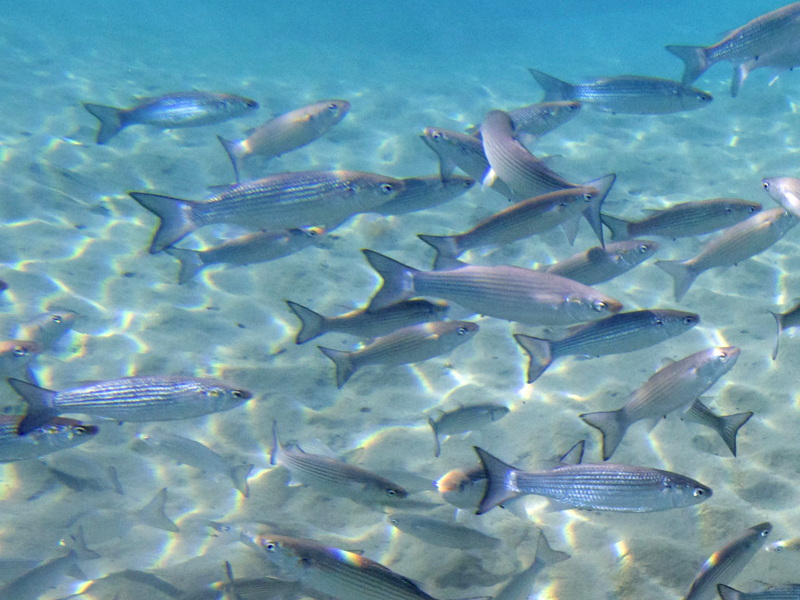
183,95 KB
Immagine Larnaca B:
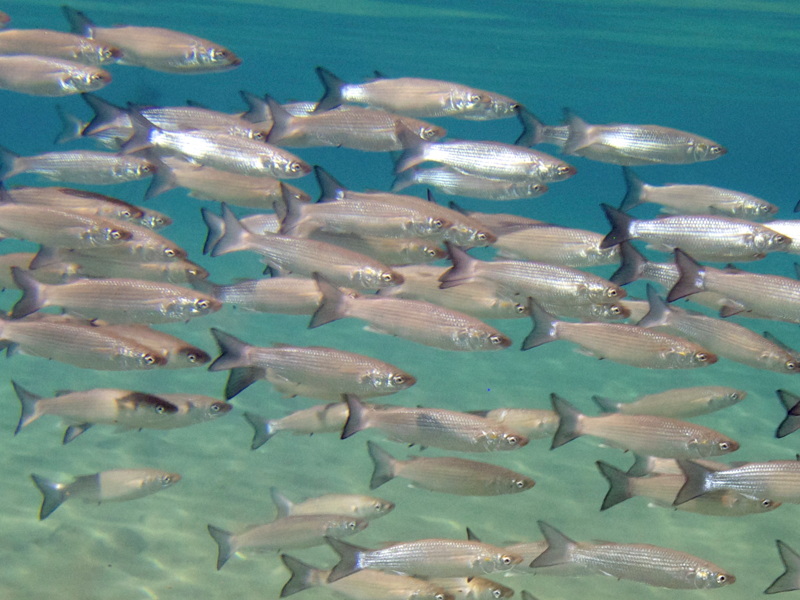
179,49 KB
Immagine Larnaca C:
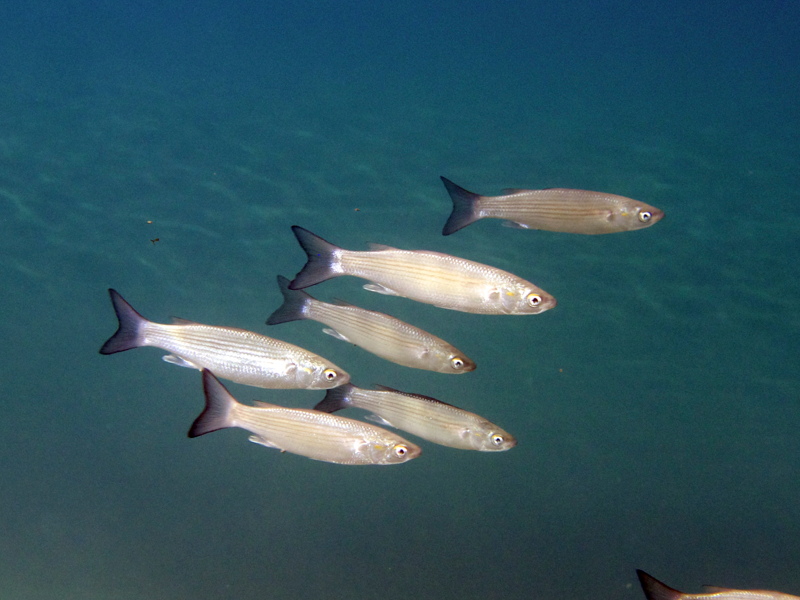
178,66 KB
--
Helmut Carl Simak |
Modificato da - carl in data 06 settembre 2011 10:38:33 |
 |
|
|
carl
Utente Junior
 
Città: Klagenfurt
Regione: Austria

93 Messaggi
Biologia Marina |
 Inserito il - 06 settembre 2011 : 10:36:57 Inserito il - 06 settembre 2011 : 10:36:57


|
Third set from Paphos:
Immagine Paphos A:
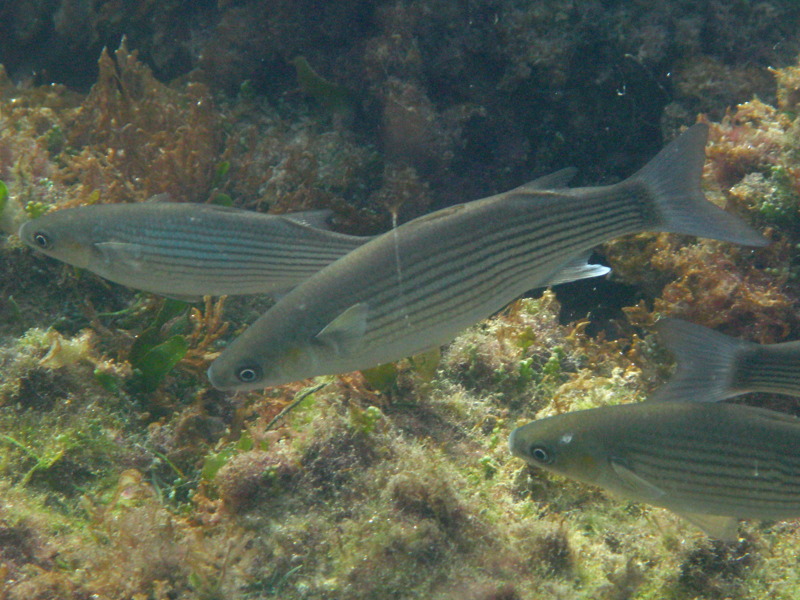
184,88 KB
Immagine Paphos B:
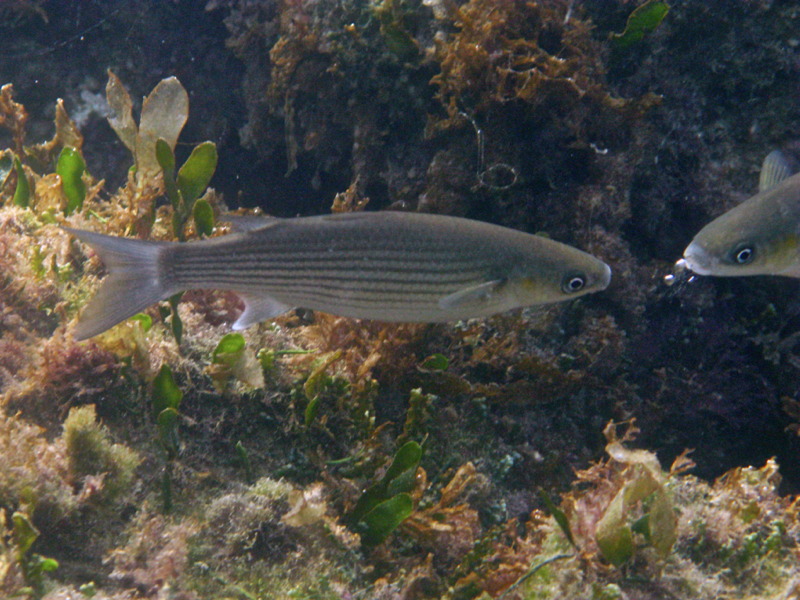
188,32 KB
Immagine Paphos C:
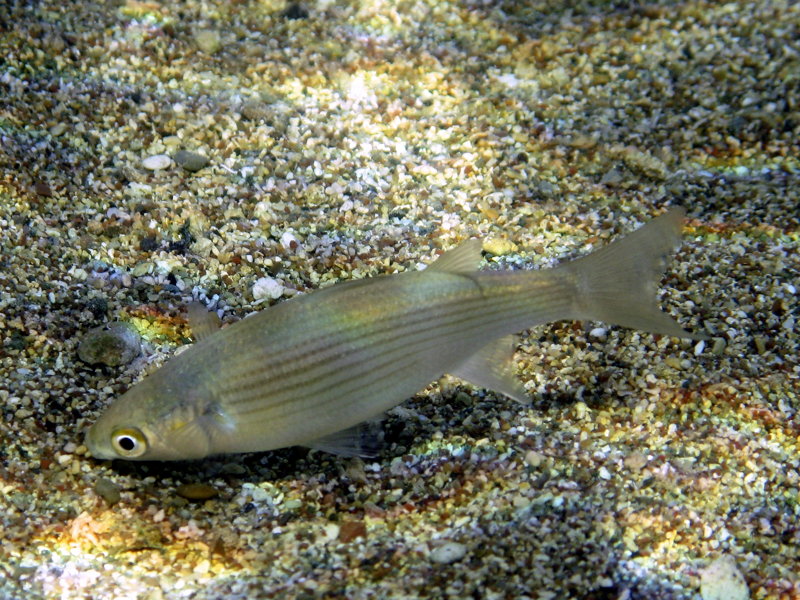
193,24 KB
Immagine Paphos D:
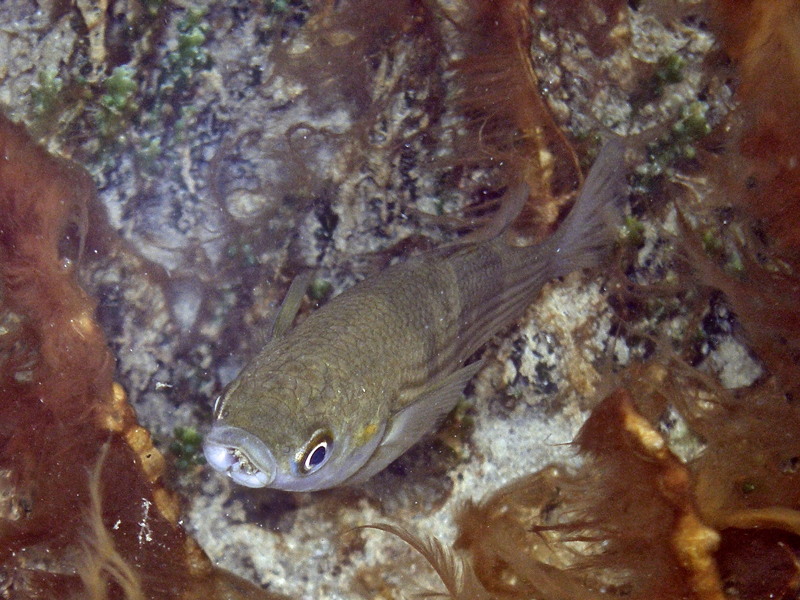
187,35 KB
So the question is clear: Who am I?
More Images on request  ! !
--
Helmut Carl Simak |
Modificato da - carl in data 06 settembre 2011 10:39:03 |
 |
|
|
etrusko
Moderatore
   
Città: Arcille
Prov.: Grosseto
Regione: Toscana

2252 Messaggi
Tutti i Forum |
 Inserito il - 07 settembre 2011 : 22:59:19 Inserito il - 07 settembre 2011 : 22:59:19


|
Hi Carl!
I find the deterimination of Liza very intriguing but often it drives to uncertain specific attributions.
The features for distinguishing Liza aurata, L. ramada and L. saliens (I have no experience on L. carinata but this lessepsian species has been not recorded from Cyprus) are: lenght of pectoral fin, presence of a dark spot on the pectoral fin axilla, presence of a golden spot on the operculum and the more or less slight shape of the body.
All the specimens for Pernera show a long pectoral fin and a showy golden spot but lack the black spot on the axilla, I think they are all L. aurata. The ones from Larnaca, too, seem to be L. aurata but in the B picture some show an axilla black spot and no golden spot on the operculum, they could be L. ramada. Unluckely the pectoral fin lenght is not visible in this photo, do you have a sharper one?
Immagine:
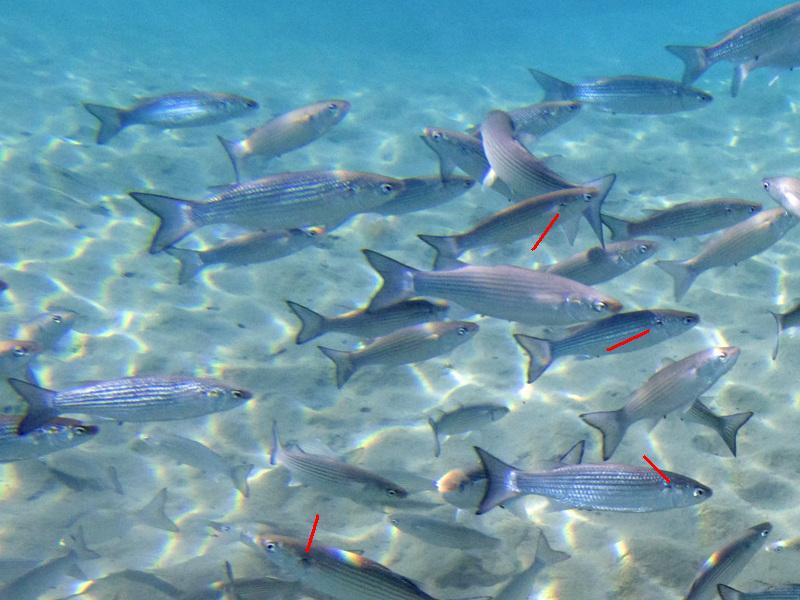
75,5 KB
In the pic A from Paphos At least one individual show a short pectoral fin, it could be L. ramado, the others on this set probably are all L. aurata.
Immagine:
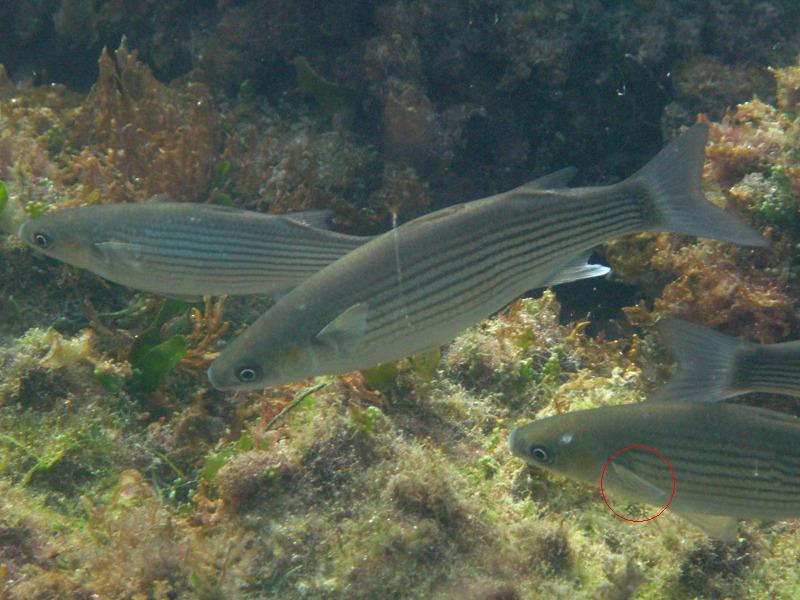
82,81 KB
No all'autostrada in Maremma! |
 |
|
|
rpillon
Moderatore
   

Città: Oderzo
Prov.: Treviso
Regione: Veneto

3830 Messaggi
Biologia Marina |
 Inserito il - 07 settembre 2011 : 23:09:51 Inserito il - 07 settembre 2011 : 23:09:51


|
Forse in questa foto si vedono delle scaglie frontali collocate davanti agli occhi che potrebbero aiutare ad escludere Liza aurata.
Perhaps in this photo you can see the frontal scales placed in front of the eyes that help to exclude Liza aurata.
| Messaggio originario di carl:
Immagine Paphos D:

187,35 KB
Helmut Carl Simak
|
Roberto Pillon
La mia galleria fotografica |
 |
|
|
etrusko
Moderatore
   
Città: Arcille
Prov.: Grosseto
Regione: Toscana

2252 Messaggi
Tutti i Forum |
 Inserito il - 07 settembre 2011 : 23:19:44 Inserito il - 07 settembre 2011 : 23:19:44


|
You're right Roberto, but we lack all the other identification features!
No all'autostrada in Maremma! |
 |
|
|
carl
Utente Junior
 
Città: Klagenfurt
Regione: Austria

93 Messaggi
Biologia Marina |
 Inserito il - 08 settembre 2011 : 00:25:49 Inserito il - 08 settembre 2011 : 00:25:49


|
I have the pictures in question only in slightly better quality. But what I did is that I uploaded the images to Picasa. Use the latter link to see them in full resolution and not cropped. The EXIF tag will show some details like date and time.
I know that Liza carinata is not officially known from Cyprus but it must be considered that the Distance from Cyprus to Beirut is around 170 Kilometers only. From the end of the Karpasian Peninsular to the Coast of Syria it is less then 110 Kilometers.
Link
--
Helmut Carl Simak |
Modificato da - carl in data 08 settembre 2011 00:58:44 |
 |
|
|
carl
Utente Junior
 
Città: Klagenfurt
Regione: Austria

93 Messaggi
Biologia Marina |
 Inserito il - 08 settembre 2011 : 09:44:49 Inserito il - 08 settembre 2011 : 09:44:49


|
This morning I added one additional image to the Picassa collection which will show most likely beside the Mullets an other Lessepsian migrant to Cyprus: Equulites klunzingeri (Steindachner 1898).
Sorry for the bad quality of the image but I was not able to accomplish one of the most important rules for underwater photography which is: First get close and the get closer while snorkeling. Beside the said the visibility dropped significantly when I entered the bay. The swell did its work.
--
Helmut Carl Simak |
 |
|
| |
 Discussione Discussione  |
|
|
|
 Natura Mediterraneo Natura Mediterraneo |
© 2003-2024 Natura Mediterraneo |
 |
|
Leps.it | Herp.it | Lynkos.net
|

 Forum
|
Registrati
|
Msg attivi
|
Msg Recenti
|
Msg Pvt
|
Utenti
|
Galleria |
Map |
Forum
|
Registrati
|
Msg attivi
|
Msg Recenti
|
Msg Pvt
|
Utenti
|
Galleria |
Map |